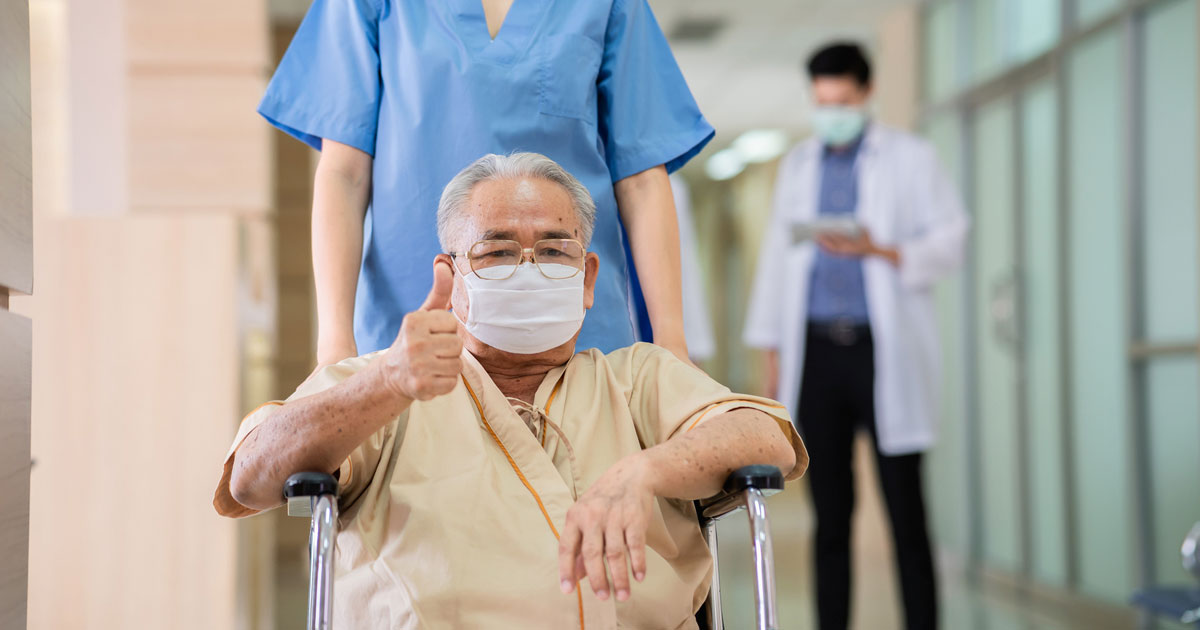
Now that we are two years into the COVID-19 pandemic, we are much better equipped and knowledgeable than when we started. But that does not mean we have everything figured out — especially when it comes to providing safe, long term care to older adults.
On the one hand, vaccinations and antiviral medicines are broadly available and best practices are now established for taking measures to help prevent the spread, the financial and logistical realities of operating through a pandemic make it much more difficult to manage.
On the patient side, access to save living conditions and affordable health care coverage can limit treatment options. On the side of nursing homes and other long term care facilities, providers can struggle to obtain personal protective equipment (PPE), their building layout may not allow for proper isolation in the event of infection, and they may lack the skilled workforce that is trained to manage more pressing medical issues should an infection take a turn for the worst.
With 85% of long term care facility residents among the more vulnerable part of the population, it is important to understand the effects of the pandemic on your available health care options.
Long Term Care During COVID
It is no secret that the American healthcare system has its shortcomings, and those are most acute when it comes to care for nursing home residents. With the aging population growing every year, resources dedicated to their care are increasingly difficult to secure. This can lead to overcrowding and low staffing ratios — which in turn contribute to an increased likelihood of contracting COVID-19.
While there may be no perfect solution, it is possible to get a better understanding of the available options so that you can make informed decisions about your health care needs.
Nursing Homes and Assisted Living Facilities
All of this is happening while nursing home residents are at greater risk of experiencing the more severe effects of the virus. In 2017 — three years prior to the start of the pandemic — 16% of patients in skilled nursing homes required respiratory treatment. With the introduction of a highly contagious virus that attacks the respiratory system, nursing home residents face a worrying set of circumstances.
It is a double edged sword: Skilled nursing homes are able to provide respiratory services to people with COVID-19, but since more infected people are in need of those services, it can be dangerous for the facility as a whole to accept the influx of new patients.
There is an alternative to skilled nursing homes, however. There are almost 30,000 assisted living homes in the United States, and 46% of them have only 4 to 10 beds, and in general, they do not accept patients who have tested positive for COVID-19. This makes these facilities safer (in terms of the risk of infection) on average than skilled nursing facilities, which can have 100 or more patients at a time.
Smaller homes have their own drawbacks, though. While they may be safer from a COVID-19 perspective, they are not equipped to treat and manage more complex conditions in the ways that skilled nursing homes are. But if your loved one does not require specialized care, a smaller assisted living home is a great option. More good news is that, because smaller homes are better insulated from the pandemic, the availability of rooms has not been affected nearly as much as with skilled nursing facilities. There’s as good a chance that you will be able to find a home as ever.
Home Health Care
Another option for long term care is home health care. Similar to skilled nursing homes and assisted living facilities, home health care has its pros and cons. On the plus side, it gives you the greatest amount of control over a patient’s risk of exposure to COVID-19. On the other hand — and as with assisted living facilities — it is very difficult to ensure on-site access to the medical technologies necessary for managing complex health conditions.

Personal Protective Equipment
Infection prevention measures are extremely important, as infection control is one of the biggest challenges facing long term care facilities. Adequate measures to help protect residents are easier to implement in smaller assisted living homes because there are fewer variables overall. The number of both patients and staff are much more constrained, and with fewer patients come fewer visitations from fewer friends and family members. In combination with standard precautions against spreading the virus, the reduced number of potential vectors makes smaller homes a relatively safe option among healthcare settings.
Skilled nursing facilities have a greater challenge on their plates. Those on the larger side can have a couple hundred people on site at any given time — including patients, staff, visitors, outside service providers, and other vendors. As discussed previously, these types of facilities are better equipped to respond to the physical aspects of a COVID-19 infection. But it is better to have never contracted the virus in the first place, so infection prevention and control are paramount.
Whenever possible, everyone should practice social distancing, masking (N95s and KN95s are recommended as the most effective against the omicron variant), and frequent hand washing. Isolation rooms should be utilized to the extent that they are available, and staff and patients alike should be tested often to help detect and mitigate the spread. Vaccination against COVID-19 remains the best weapon against severe illness and death. It is important to note, though, that requirements pertaining to the vaccination status of health care workers are still in flux, so one cannot assume that the staff at your loved one’s facility has taken that precaution.
If you have options between multiple facilities in your area, you should consider calling to find out what measures are in place to prevent and manage the spread of COVID-19 (including the availability of personal protective equipment), as well as what protocols the team has established for administering and escalating medical care. This will help you determine the best course of action in the face of challenging circumstances.
Conclusion
With the rampant spread of COVID-19 still among us, it is of the utmost importance that patients and their families do everything they can to remain safe. The pandemic continues to strain the healthcare system at almost every level, and without a good understanding of the medical landscape, it can be very difficult to fully understand what the best course of action might be when it comes to long term care.
At Keystone Health, we understand that the situation facing long term care patients has become especially difficult in light of the COVID-19 pandemic. But our team is prepared to help. We know how to effectively manage long term care no matter what the circumstances are. Our team is a trusted provider here in the greater Boise area, and we have been proudly serving our community for years.
If you or someone you love are in need of medical service or support for long term care during this pandemic, we can help. Whether it is a better understanding of the best practices around preventing and managing infection or a walkthrough of the options presented through your medical insurance, we have the knowledge and expertise to give you the best experience. Get started today with our New Patient Process, and you will soon be able to have the support that is right for your family.
